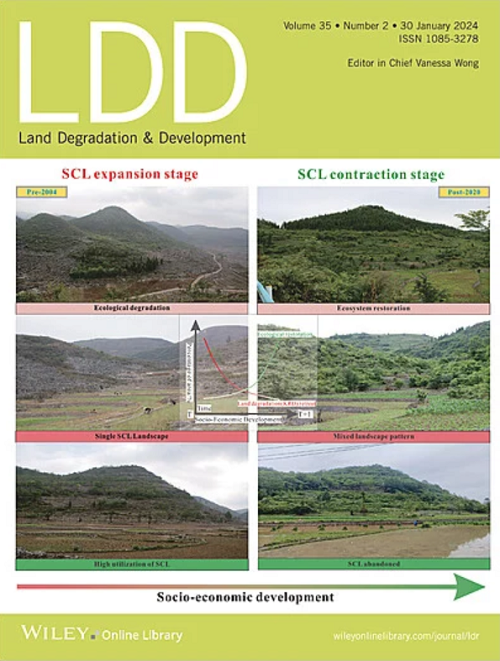Divergent Responses of Autotrophic and Heterotrophic Respiration to Nitrogen Application in a Pinus tabulaeformis Plantation
IF 3.6
2区 农林科学
Q2 ENVIRONMENTAL SCIENCES
引用次数: 0
Abstract
Nitrogen (N) fertilization, as a plantation management technique, plays a vital role in maintaining plantation healthy development and affecting CO2 emissions. However, the effect of N fertilization on soil respiration (Rs) in the planted forests remains debated. Distinguishing autotrophic respiration (Ra) and heterotrophic respiration (Rh) will help better understand the response of Rs to N fertilization. A 5-year field experiment with four N levels (0, 5, 10, and 20 g N m−2 a−1) was conducted in a Pinus tabulaeformis plantation in China to explore the responses of Rs and its components to N management. In the fourth and fifth years after N application, as the duration and level of N fertilization increased, its effect on Ra changed from inhibition (−28.9%) to promotion (42.5%), while the effect on Rh shifted from promotion (31.6%) to inhibition (−2.9%). This resulted in an average increase of 12.5% in Rs. This effect was due to a significant increase in fine root biomass and a decrease in microbial biomass under N fertilization. The positive effect of increased Ra due to the rise in fine root biomass on Rs outweighed the negative effect of reduced Rh caused by the decline in microbial biomass. N fertilization reduced the contribution of Rh to Rs by 5%–9%. Dissolved organic carbon and nitrogen, soil moisture, and soil temperature were key factors affecting Rs. Our findings indicate that N fertilization application promoted root growth while inhibiting soil microbial activity, ultimately promoting the growth of artificial forests and reducing the decomposition of organic matter.油松人工林自养和异养呼吸对施氮的差异响应
氮肥作为一种人工林管理技术,在维持人工林健康发展和影响CO2排放方面起着至关重要的作用。然而,氮肥对人工林土壤呼吸的影响仍存在争议。区分自养呼吸(Ra)和异养呼吸(Rh)有助于更好地了解Rs对氮肥的响应。在中国油松人工林进行了5年4个N水平(0、5、10和20 g N m−2 A−1)的田间试验,探讨了Rs及其组分对N管理的响应。施氮后第4、5年,随着施氮时间和施氮量的增加,对Ra的影响由抑制(- 28.9%)转变为促进(42.5%),对Rh的影响由促进(31.6%)转变为抑制(- 2.9%)。这导致Rs平均增加12.5%,这是由于施氮显著增加了细根生物量,减少了微生物生物量。细根生物量增加导致的Ra增加对Rs的积极影响大于微生物生物量下降导致的Rh降低对Rs的负面影响。施氮使Rh对Rs的贡献降低了5% ~ 9%。土壤溶解有机碳和有机氮、土壤湿度和土壤温度是影响Rs的关键因素。研究结果表明,施氮促进了根系生长,抑制了土壤微生物活性,最终促进了人工林的生长,减少了有机质的分解。
本文章由计算机程序翻译,如有差异,请以英文原文为准。
求助全文
约1分钟内获得全文
求助全文
来源期刊

Land Degradation & Development
农林科学-环境科学
CiteScore
7.70
自引率
8.50%
发文量
379
审稿时长
5.5 months
期刊介绍:
Land Degradation & Development is an international journal which seeks to promote rational study of the recognition, monitoring, control and rehabilitation of degradation in terrestrial environments. The journal focuses on:
- what land degradation is;
- what causes land degradation;
- the impacts of land degradation
- the scale of land degradation;
- the history, current status or future trends of land degradation;
- avoidance, mitigation and control of land degradation;
- remedial actions to rehabilitate or restore degraded land;
- sustainable land management.
 求助内容:
求助内容: 应助结果提醒方式:
应助结果提醒方式:


